Gent (Belgium) – the most detailed information about the city with photos. The main attractions of Ghent with a description, guides and cards.
Contents
City Ghent (Belgium)
Ghent is a city in the north of Belgium, the capital of Eastern Flanders. It is a picturesque labyrinth of narrow old streets and canals framed by quaint old buildings with gabled roofs and magnificent historical monuments. Ghent is one of the most beautiful and picturesque Belgian cities, along with Bruges, which miraculously preserved its medieval look and flavor. Its historical center is magnificent architectural ensemble of old gothic buildings and ancient churches. A special atmosphere is filled with a walk in the evening Ghent when most of its attractions are covered.
Ghent is famous for cosmopolitanism, calm atmosphere and rich history. In the Middle Ages, he was one of the richest and influential cities in Europe, second only to Paris. The influence of the rich past can be clearly seen when looking at impressive architecture of sacred monuments, and the lack of The historic center of Ghent cars only enhances the atmosphere a prosperous late medieval city. Also Gent is important educational center of Belgium. At his university studying more than 60,000 students, so the streets are full young people
- Geography and climate
- Practical information
- Story
- How to get there
- sights
- Video
- Maps and guides
- Comments and reviews
Geography and climate
Ghent is located in the northern part of Belgium in the East region Flanders The city is located at the confluence of the rivers Scheld and Leie. Channel Terneuzen connects Ghent with the mouth of the Scheldt, thanks to which in the city has a port that can take ships. Ghent has temperate maritime climate. Summer is cool and often rainy, like winter.
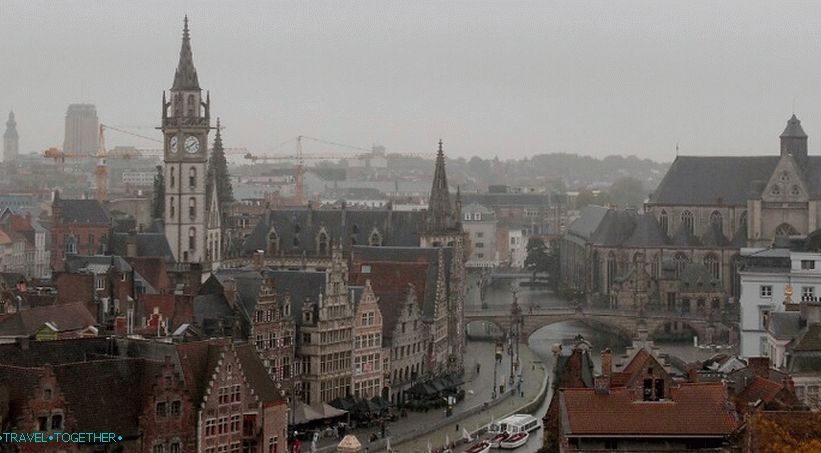 Panorama of Ghent
Panorama of Ghent
Practical information
- The population is 260 thousand people.
- The area is 156.18 km².
- Currency – Euro.
- The language is Dutch.
- Time – Central European (UTC +1, summer +2).
- Gentse feeten is one of the largest cultural events in Europe, which is held from the first Friday of July to the beginning of the third week of the month. Within ten days in Ghent six are organized international festivals with hundreds of events and free music
- Vrijdagmarkt (Friday market), which is held on Friday (with 7:30 to 13:00 and Saturday (from 11:00 to 18:00) on the medieval site fortress.
- Ghent offers an excellent and affordable sample of the Flemish cuisine, which, according to local residents, is one of the best in Europe, as it combines French delicacies and simple Northern European dishes. Be sure to try here. Gentse waterzooi. This dish is a cheap fish stew. (chicken) and vegetables.
- Affordable restaurants with traditional cuisine can be found in the area. Korenmarkt and Vrijdagmarkt.
Story
The exact date of the founding of Ghent is unknown, although many believe that the settlement here could already exist in the Roman period. City first mentioned in the 7th century. In 650, St. Amand founded here two monasteries, thanks to which the city and the market were formed. AT 9 century Ghent was twice looted by the Vikings. In the 11th century the city became part of Flanders and actually gained independence. By the 13th century Ghent turned into one of the largest and richest cities in Europe yielding in terms of population only to Paris.
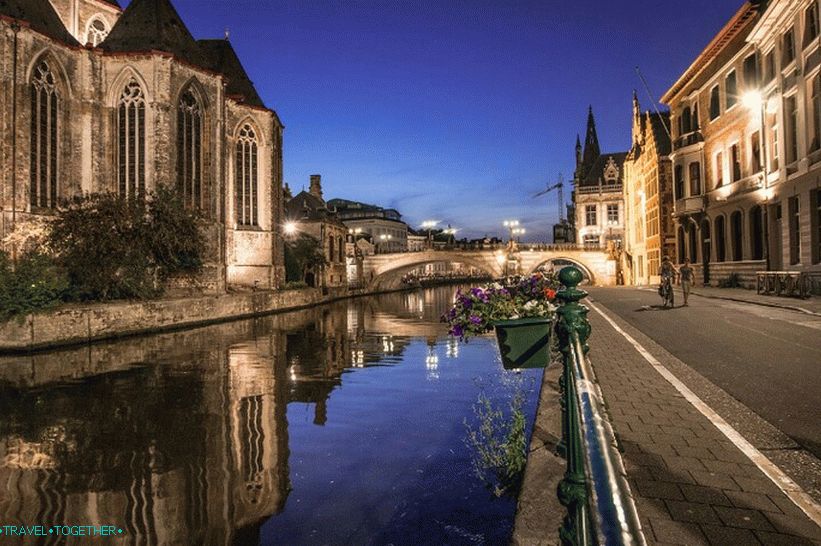 Evening Ghent
Evening Ghent
In the 15th century, Flanders was merged with neighboring provinces. the dukes of burgundy. In the 16th and 17th centuries, the city lost its importance and The 18th century was captured first by the French, then the Austrians, then again by the French (at the beginning of the 19th century under Napoleon), until finally became part of the Belgian kingdom. In the 19th century, Ghent became most important center of textile industry. Industrial the flowering of the city contributed to the construction of the canal and railway tracks.
How to get there
Ghent is only 30 minutes by train from Brussels railway line connecting the capital of Belgium with Bruges. The nearest airports are located in Brussels, Antwerp and Lille By bus you can easily get to Ghent from Amsterdam, Paris, London and other cities.
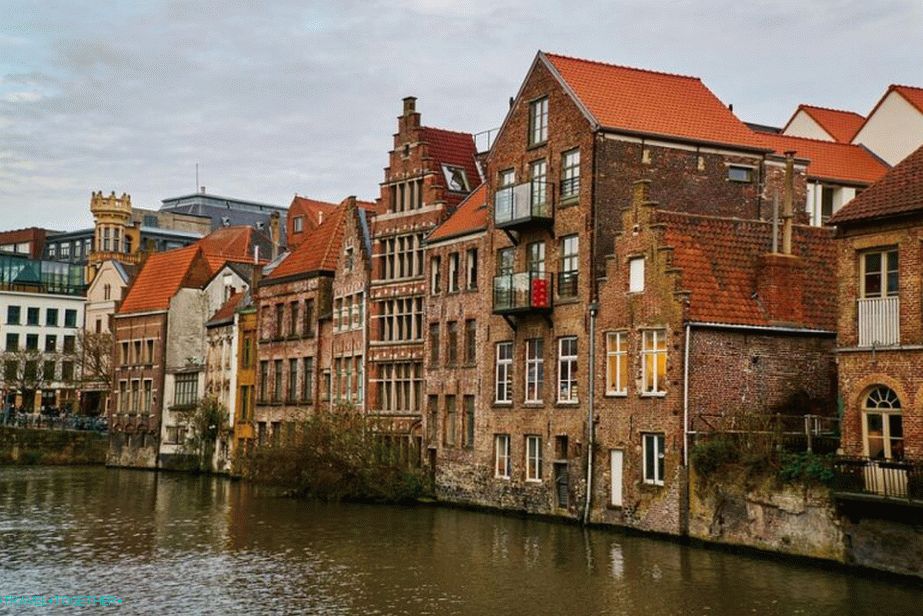 Ghent
Ghent
sights
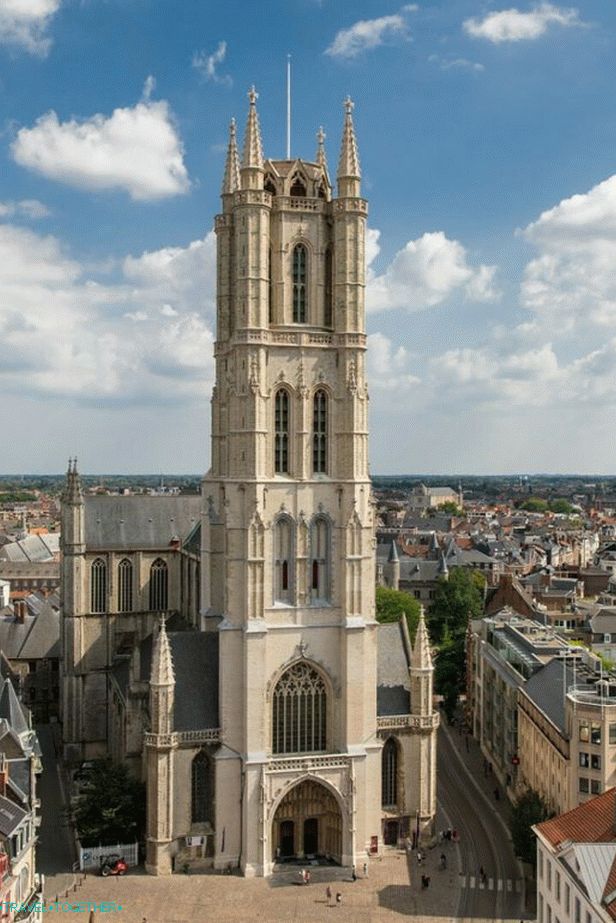 Saint Cathedral Bavona
Saint Cathedral Bavona
Saint Bavo Cathedral – a magnificent masterpiece of medieval gothic and one of the most significant sacred monuments of Belgium. It is a magnificent brick and granite building with romance crypt. The gothic choir of the cathedral dates back to the 13th century, and The late gothic tower and the main nave were built in the 15th and 16th centuries. The interior of the cathedral is richly decorated with unique paintings among which stands out the greatest masterpiece of the old Flemish painting – The worship of the Lamb. Under the church is a vast ancient crypt, which contains numerous graves of bishops and a rich treasure chest.
 Gravensten
Gravensten
Gravensten – one of the most powerful medieval fortresses in Western Europe, surrounded by the river Liv. Gravensten is the only medieval castle of Flanders, the fortification system which remained virtually untouched. The castle was built between 1180 and 1200 by order of Philip of Alsace on the foundation of an earlier construction of the 9th century. Gravensten created in Crusader castle style and is a unique example European medieval art of fortification.
In the 14th century, the castle ceased to perform a defensive function and used by the counts of Flanders as a residence. In the 18th century Gravensten became privately owned and was turned into cotton factory. Square in front of the castle (Sint-Veerleplein) is the oldest in bruges. In the Middle Ages there was held market. Also on the square were executed convicts. Now this the place has beautiful 17th century architecture.
 Bell tower
Bell tower
Belfry (Belfry) – one of the architectural dominants of the old city and a symbol of independence of medieval Ghent. This building is located in the western part of Sint-Baafsplein square and has a height 91 meters. The bell tower in Ghent was started in 1300 and completed in 1338 In 1380 the tower was crowned with a modern spire, on the top of which was set gilded copper dragon. Directly adjacent to the bell tower is a historic building of the 15th century, which was a meeting place for wool and fabric merchants. In the 18th century this building was turned into a prison.
 Church of sv. Nikolay
Church of sv. Nikolay
Church of sv. Nicholas – a masterpiece of Gothic architecture with a unique 76-meter tower. This sacred monument began to build in 13 century on the site of an older Romanesque church. From the 16th century it is the building was dilapidated and was reconstructed in the first half of the 20th century.
 Town Hall (Stadhuis)
Town Hall (Stadhuis)
The Town Hall (Stadhuis) is a magnificent historic building that is a kind of synthesis of the Italian palazzo and is rich decorated gothic palace. The construction of the town hall in Ghent was started at the end of the 15th century and lasted a whole century, therefore the building has elements of different architectural styles.
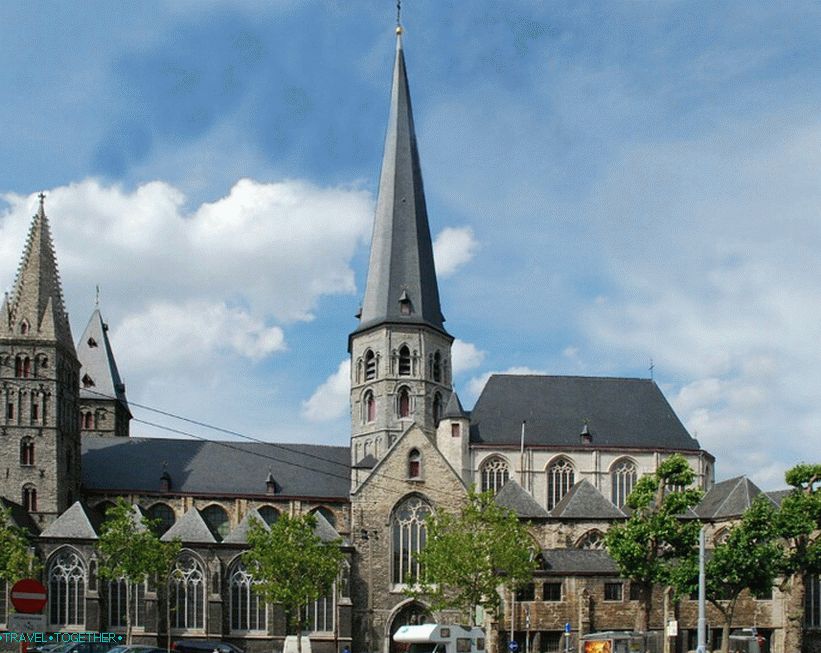 Church of sv. Jacob
Church of sv. Jacob
Church of sv. Jacob is the oldest Romanesque church in Belgium with double western tower, built in 1120. Church was expanded in the 15th century and rebuilt in the Gothic style. it the religious structure was carefully rebuilt and restored twice: between 1733 and 1784 and between 1866 and 1906, while receiving the features of Baroque architecture.
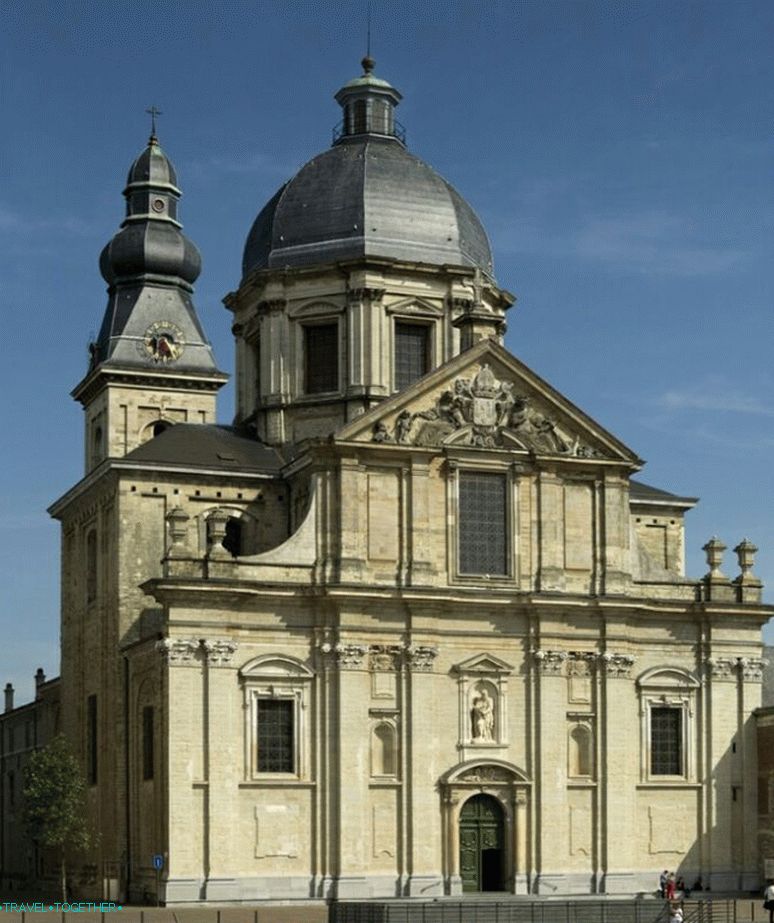 Church of Our Lady and St. Peter
Church of Our Lady and St. Peter
Church of Our Lady and St. Peter – a religious building in Baroque style, located on the site of an ancient abbey of the 7th century, founded by sv. Amand. The first stone of the baroque church was laid in the year 1629. At the end of the 18th century, monks were expelled, and their property confiscated. The abbey became a barracks for the soldiers, but the church survived by becoming a museum.
The surroundings of the Kraanlei Canal are famous for their elegant, historic houses, and on Sint-Veerleplein adjoining street is the old fish market, built in 1689 in the Baroque style. On the top the gate depicts Neptune, and just below – allegorical images Scheldt (man) and Laye (woman).
 Clock tower, owned by former mail
Clock tower, owned by former mail
The former post is a beautiful historic building in neo-gothic style built in the 19th century. The most interesting of its architectural A special feature is the 52-meter clock tower.
Lovers will love the walk along the Graslei channel old architecture. Here you can admire the beautiful merchant buildings in the style of the Brabant gothic and Flemish Renaissance.
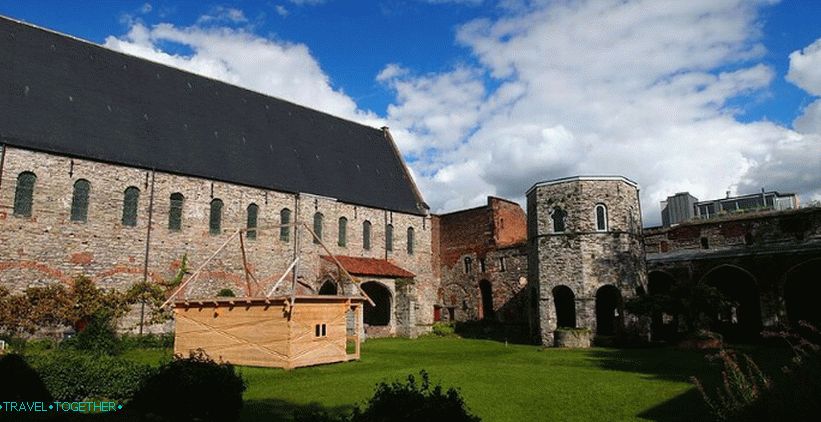 Abbey Ruins Saint Bavo
Abbey Ruins Saint Bavo
The ruins of the abbey of Saint Bavo – an ancient monastery in the east parts of Ghent, founded in the 7th century by holy Amand and restored after the Norman destruction in the 10th century. These fragments are ancient Gothic structures literally breathe history. In the former refectory With beautiful 12th century Romanesque frescoes, there is a museum stone sculptures, which is an extraordinary collection medieval tombstones, sculptural compositions and other artifacts 12 – 18 centuries.
 Church of sv. Michael
Church of sv. Michael
Church of sv. Mihaila – beautiful gothic church, origins which go to the 11th century. This religious building was supposed to stand out a huge tower with a height of 134 meters, but it was never completed, frozen at around 24 meters.
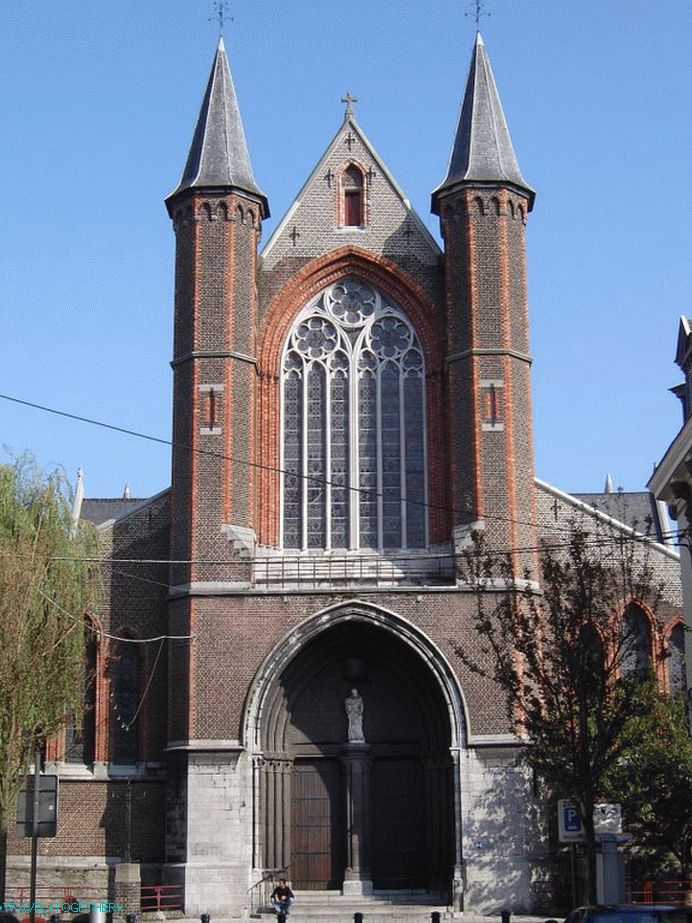 Church of sv. Joseph
Church of sv. Joseph
Church of sv. Joseph – neo-gothic church built at the end 19th century.
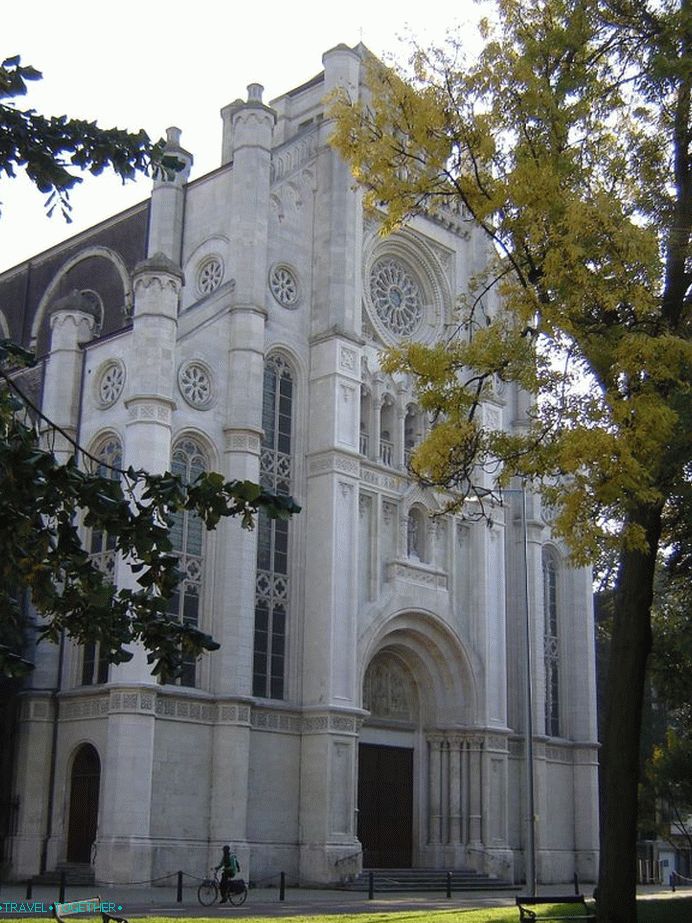 Church of sv. Annas
Church of sv. Annas
Church of sv. Anne – eclectic religious building with Romanesque, Byzantine and Gothic elements architecture.
Video
Maps and guides
Tourist Card






